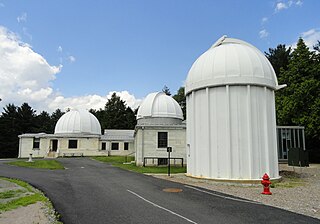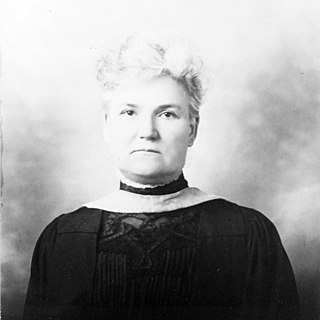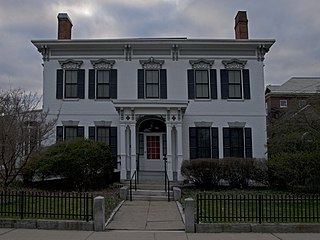Related Research Articles

Watertown is a city in Middlesex County, Massachusetts, United States, part of Greater Boston. The population was 35,329 in the 2020 census. Its neighborhoods include Bemis, Coolidge Square, East Watertown, Watertown Square, and the West End.

Sir Edward Sabine was an Irish astronomer, geophysicist, ornithologist, explorer, soldier and the 30th president of the Royal Society.
Perkins School for the Blind, in Watertown, Massachusetts, was founded in 1829 and is the oldest school for the blind in the United States. It has also been known as the Perkins Institution for the Blind.

Eliza Patricia Dushku is an American actress. She is best known for starring as Faith in the supernatural drama series Buffy the Vampire Slayer (1998–2003) and its spin-off series Angel (2000–2003). She also had lead roles in the Fox supernatural drama series Tru Calling (2003–2005) and the Fox science fiction series Dollhouse (2009–2010), for which she was a producer.

A globe is a spherical model of Earth, of some other celestial body, or of the celestial sphere. Globes serve purposes similar to maps, but, unlike maps, they do not distort the surface that they portray except to scale it down. A model globe of Earth is called a terrestrial globe. A model globe of the celestial sphere is called a celestial globe.
Rogers Cable Inc. is Canada's largest cable television service provider with about 2.25 million television customers, and over 930,000 Internet subscribers, primarily in Southern & Eastern Ontario, New Brunswick and Newfoundland and Labrador. Rogers Cable is a division of Rogers Communications Partnership, itself wholly owned by Rogers Communications Inc.

Mary Mason Lyon was an American pioneer in women's education. She established the Wheaton Female Seminary in Norton, Massachusetts, in 1834. She then established Mount Holyoke Female Seminary in South Hadley, Massachusetts, in 1837 and served as its first president for 12 years. Lyon's vision fused intellectual challenge and moral purpose. She valued socioeconomic diversity and endeavored to make the seminary affordable for students of modest means.

The Green Mountains are a mountain range in the U.S. state of Vermont and are a subrange of the Appalachian Mountains. The range runs primarily south to north and extends approximately 250 miles (400 km) from the border with Massachusetts to the border with Quebec, Canada. The part of the same range that is in Massachusetts and Connecticut is known as The Berkshires or the Berkshire Hills and the Quebec portion is called the Sutton Mountains, or Monts Sutton in French.

The A branch or Watertown Line was a streetcar line in the Boston, Massachusetts, area, operating as a branch of the Massachusetts Bay Transportation Authority Green Line. The line ran from Watertown through Newton Corner, Brighton, and Allston to Kenmore Square, then used the Boylston Street subway and Tremont Street subway to reach Park Street station.

The Boston-area trolleybus system formed part of the public transportation network serving Greater Boston in the U.S. state of Massachusetts. It opened on April 11, 1936, with a large network operating for the next quarter-century. Measured by fleet size, the Boston-area system was the second-largest trolleybus system in the United States at its peak, with only the Chicago system having more trolleybuses than Boston's 463. After 1963, the only remaining portion was a four-route cluster operating from the Harvard bus tunnel at Harvard station, running through Cambridge, Belmont, and Watertown. The Massachusetts Bay Transportation Authority took over the routes in 1964.

Whitin Observatory is an astronomical observatory owned and operated by Wellesley College. Built in 1900, with additions in 1906, 1967, and 2010, it is located in Wellesley, Massachusetts and named after Wellesley College trustee Mrs. John Crane Whitin of Whitinsville, who donated the funds for the observatory. Astronomer Sarah Frances Whiting was the first director of the new Wellesley College Astronomy Department.

Jack London State Historic Park, also known as Jack London Home and Ranch, is a California State Historic Park near Glen Ellen, California, United States, situated on the eastern slope of Sonoma Mountain. It includes the ruins of a house burned a few months before Jack London and family were to move in, a cottage in which they had lived, another house built later, and the graves of Jack London and his wife. The property is both a California Historical Landmark and a National Historic Landmark.

Ellen Fitz Pendleton was an American educator. She was president of Wellesley College for 25 years and notably expanded it financially and physically.

Elizabeth Nichol was a 19th-century British abolitionist, anti-segregationist, woman suffragist, chartist and anti-vivisectionist. She was active in the Peace Society, the Temperance movement and founded the Darlington Ladies Anti-Slavery Society. In 1853 she married Dr. John Pringle Nichol (1804–1859), Regius Professor of Astronomy at the University of Glasgow. She was one of about six women who were in the painting of the World Anti-Slavery Convention of 1840.

Margaret Bryan was an English natural philosopher and educator, and the author of standard scientific textbooks. She was schoolmistress of a school located at various times in Blackheath, at Cadogan Place, and in Margate at Bryan House above the yet to be discovered Margate Caves. Her first known work was Compendious System of Astronomy (1797), collecting her lectures on astronomy. She later published Lectures on Natural Philosophy (1806), a textbook on the fundamentals of physics and astronomy, and an Astronomical and Geographical Class Book for Schools, a thin octavo, in 1815.

Miriam Elizabeth Benjamin was an American schoolteacher and inventor. In 1888, she obtained a patent for the Gong and Signal Chair for Hotels, becoming the second African-American woman to receive a patent.

Harriet Newell Haskell was an American educator and school administrator from the U.S. state of Maine. She taught from 1855 to 1860 in Waldoboro, Maine and Boston, Massachusetts. From 1860 to 1868, she was a teacher and principal at Castleton Collegiate Seminary, Vermont. Thereafter, for 39 years, she served as principal at Monticello Seminary of Godfrey, Illinois.
Judith Ann Rasmussen Dushku is an American academic political scientist, journalist, writer, and humanitarian. An active member of the Church of Jesus Christ of Latter-day Saints, and well known as a Mormon feminist, Dushku cofounded the Mormon women's journal Exponent II, was the Relief Society president for the Boston stake of the LDS Church, became lead founder of a humanitarian agency in Uganda, and is a professor of government at Suffolk University, specializing in comparative politics and the interaction of policy and gender since the 1970s. Dushku has been dean of a satellite campus, has won two major awards at Suffolk, and has been a Fulbright Senior Specialist. Dushku was extensively quoted by Mitt Romney when he was running for a US presidential candidacy. Her daughter, Eliza Dushku, is a successful television and film actress.

Miss Catherine Fiske's Young Ladies Seminary was a boarding and day school for young ladies, located in Keene, New Hampshire. Established in 1814, it achieved a national reputation. After the 1837 death of Catherine Fiske, the school's founder, the seminary continued to operate until the early 1840s. The property went through various changes but currently serves as the President's House at Keene State College.

Betsey Ann Stearns was an American inventor of the long nineteenth century. She is credited with developing a "Diagram and System for Cutting Ladies' and Children's Garments". The invention was first issued in 1864 and improved upon in 1867. It is described as being simple and accurate, easily learned, and economical.
References
- ↑ Watertown Library, MA: Official website. Watertown Library, MA | Official Website. (n.d.). Retrieved December 6, 2022, from http://www.watertownlib.org/
- ↑ Stoner, J. (2022, March 4). As the world turns: Ellen Eliza Fitz and her inventive Globe Mount. As The World Turns: Ellen Eliza Fitz and Her Inventive Globe Mount | Worlds Revealed: Geography & Maps at The Library Of Congress. Retrieved December 6, 2022, from https://blogs.loc.gov/maps/2022/03/as-the-world-turns-ellen-eliza-fitz-and-her-inventive-globe-mount/